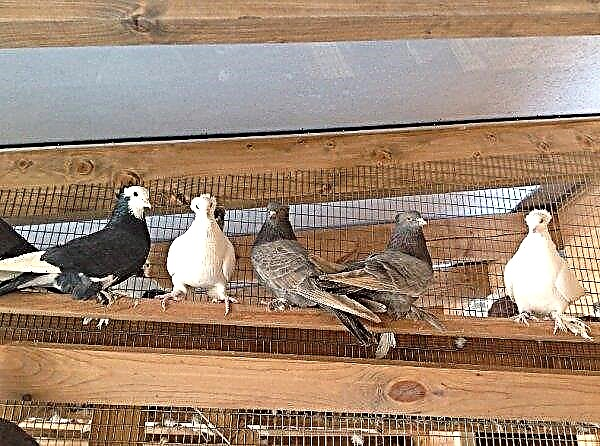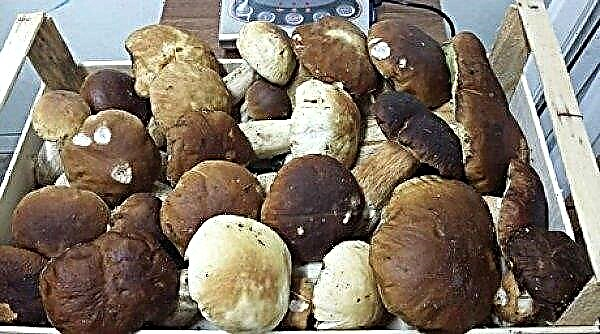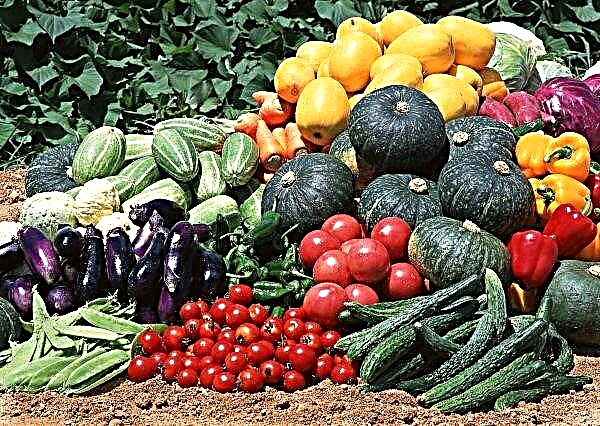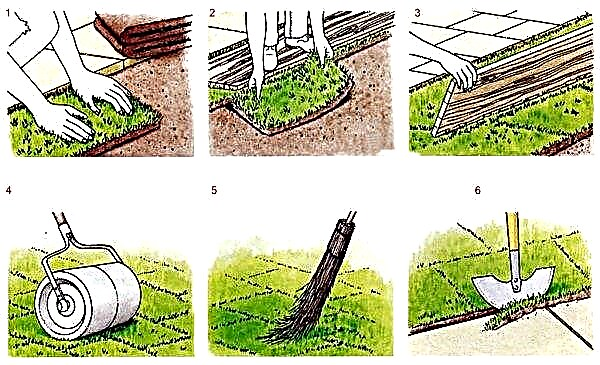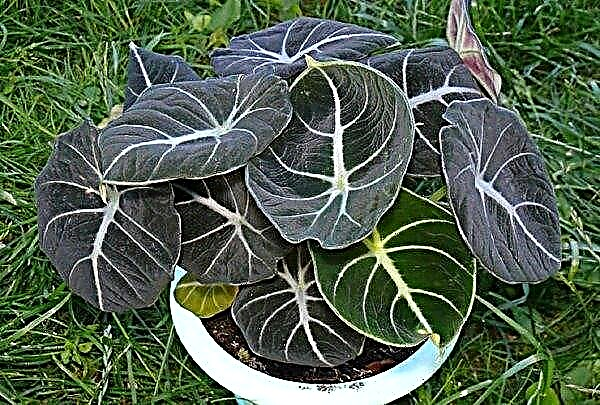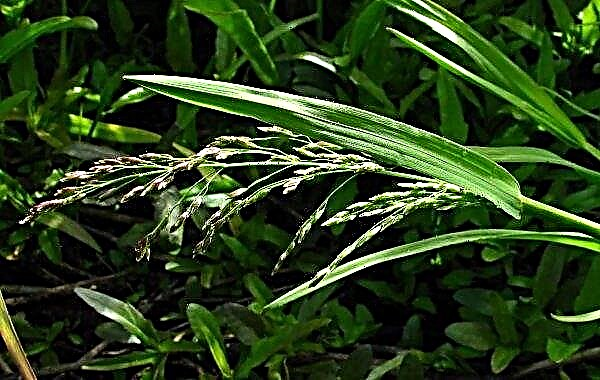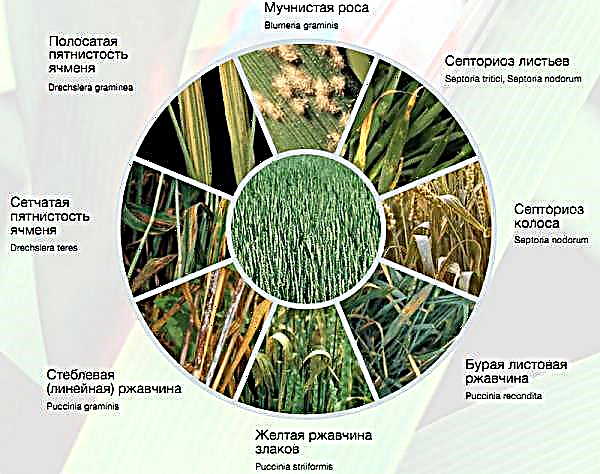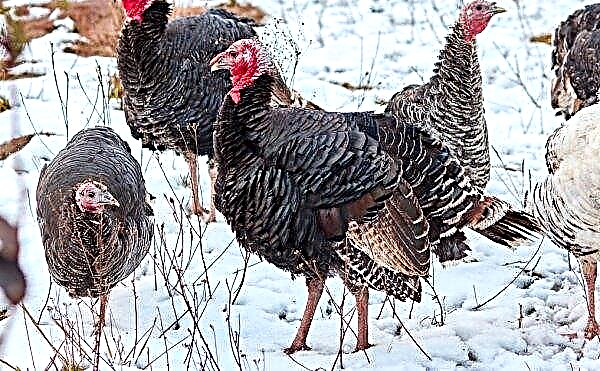Saffron was known since antiquity, was used in cooking and for treatment. And then this fragrant spice already cost a lot of money. The thing is that this spice is just a small part of the flower, the cultivation of which has its own characteristics. Heat-loving saffron is not grown everywhere, and the process of obtaining a valuable seasoning is very time-consuming, so the market is filled with its simpler substitutes.
Tasting and flavoring saffron spices
Saffron is a spice and food coloring of plant origin. According to the description, saffron looks like threads of a dark red color 3-5 cm long. They have an incredibly spicy aroma and astringent honey-bitter taste.
 These stigmas are solitary or sit in three pieces on a yellowish base. Such photos can be found on the Internet. It should be noted that the light yellow lower part does not include coloring substances, and its length is not more than 1 cm.
These stigmas are solitary or sit in three pieces on a yellowish base. Such photos can be found on the Internet. It should be noted that the light yellow lower part does not include coloring substances, and its length is not more than 1 cm.
Due to the aroma and spicy taste, the described spice is used in cooking when cooking meat dishes (pilaf, soup), fish, stewed vegetables, desserts and pastries, as well as in the manufacture of sausages, cheese. Even from a small string of this spice, vegetable and meat dishes will acquire an incredibly spicy aroma and orange tint.
Important! You should adhere to the recommended dosage when consuming this spice - otherwise it can be poisoned. Three saffron flowering stigmas are enough to flavor a prepared dish.
Kinds of saffron
Depending on the area of growth, there are different qualitative characteristics of saffron.
The following types are considered the most popular:
- Kashmir. This spice is grown in the region of Kashmir and Himachal Pradesh (India). It has a rich dark ruby color and pronounced aroma. There are three varieties of this spice: Shahi, Mogra, Lachha. Due to the small volume of production, it has the highest cost
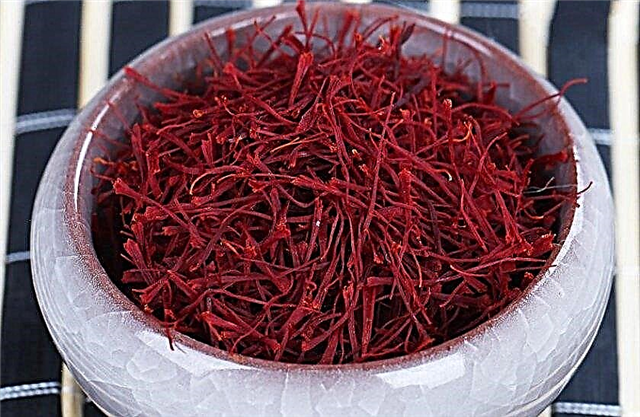 .
. - Spanish. Grown in Valencia and La Mancha (Spain). There are 2 varieties: Coupe and Superior. The first of these has an incredible aroma and is most appreciated, but the second is more widespread.
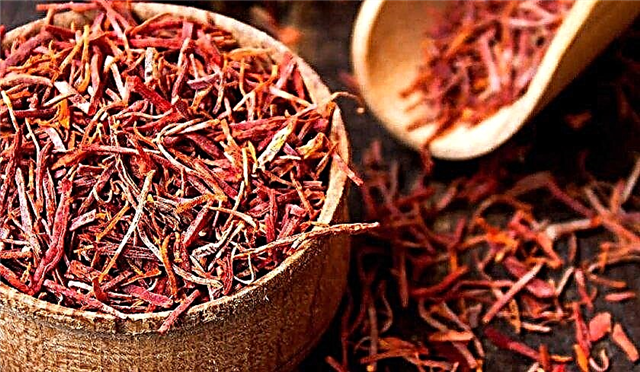
- Iranian. Grown on the territory of Razavi-Khorasan. He has a good ability to stain and has a more affordable price - $ 460.
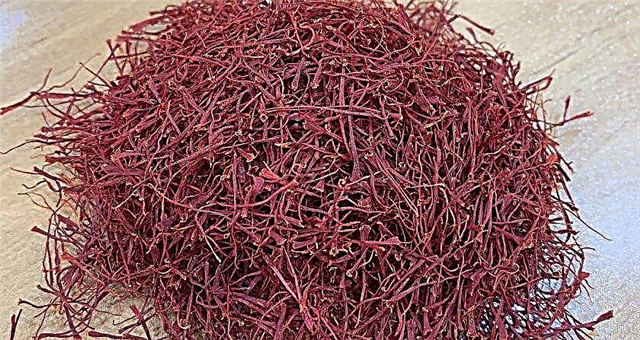
- Greek. Grows in Kozani. Meets all environmental requirements and quality standards. Its price is about 800 dollars per 1 kg.
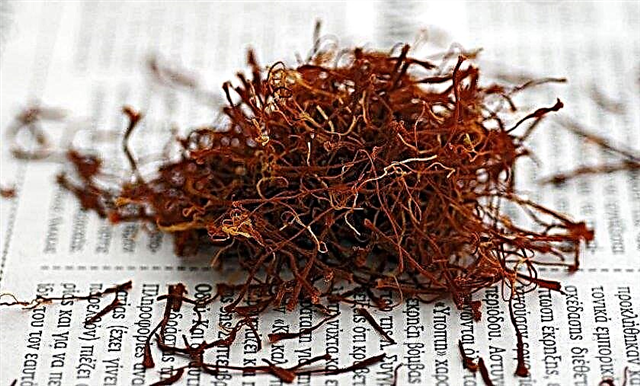
The described crop grows well in areas with a warm and dry climate. For this reason, it is also grown in eastern countries - Turkey, Tunisia, Azerbaijan, Pakistan, China, Japan, as well as in Mexico, New Zealand, etc. Now its cultivation is undertaken on a small scale, even in Switzerland. T
Did you know? About 90% of saffron is grown in Iran and is mainly exported. There he is called "red gold."
Turkish and Tunisian saffron can be found on sale, but it should be cautious - often in the markets they give safflower, better known as American saffron, for the desired spice. It is used as a substitute, but it is inferior to the original in many ways.
 In 2014, the cost of 1 kg of this spice was about $ 2000: such a high cost occurred due to the complexity of preparation - 1 flower gives about 3 stigmas, and for 1 kg of saffron, 100-200 thousand flowers must be collected manually. This plant mass blooms for about two weeks, and the buds live no more than 3 days.
In 2014, the cost of 1 kg of this spice was about $ 2000: such a high cost occurred due to the complexity of preparation - 1 flower gives about 3 stigmas, and for 1 kg of saffron, 100-200 thousand flowers must be collected manually. This plant mass blooms for about two weeks, and the buds live no more than 3 days.
The so-called Imereti saffron is made from another plant - marigolds, does not have a luxurious aroma of natural spice and is much cheaper. These substitutes also stain dishes yellow or orange, they are good to eat, but they are not so highly valued.
Important! When buying, you should definitely evaluate the appearance and strong saffron smell of this spice. In addition, it should be remembered that a real spice cannot be cheap, and it is better to buy it in general, rather than in ground form.
What spice is made of
The considered aromatic spice is made from dried stigmas of flowers of saffron (crocus sativus). This type of plant culture is a perennial of the Iris family and belongs to the genus Saffron, whose representatives have another name - crocuses.
 In the natural nature, saffron does not occur, since it is a plant cultivated by man. In the photographs, this flower is very similar to the decorative crocuses grown by flower lovers in the gardens.
In the natural nature, saffron does not occur, since it is a plant cultivated by man. In the photographs, this flower is very similar to the decorative crocuses grown by flower lovers in the gardens.
In height, the flower reaches about 120-300 mm. It has tubers in the form of a bulb of rounded shape with small processes that are 2.3–2.5 cm in diameter. Straight narrow leaves are fairly dense in structure and only a few millimeters wide. There are about 10-15 pieces in a bunch. They are painted dark green with a light stripe in the center.
The plant gives color in the form of large faded purple, yellow or white buds that smell very strong. The perianth of a simple form with fused petals has a long tube, at the limb it is painted in a darker color.
There are 3 stamens, and the ovary has filamentary pale yellow pistils, which are divided into 3 stigmas (stamens) about 3 cm long. They have an intense orange-red color. The fruits are boxes that look like a triangle.
 Plants propagate only with corms, which are formed near the mother's bulb.
Plants propagate only with corms, which are formed near the mother's bulb.
Growing and picking saffron
A good climate is greatly influenced by a favorable climate. The described crop loves warmth and good lighting, as well as fertile soils with good drainage. It does not tolerate excessively wet and marshy soil, rainy weather, but the amount of precipitation should be at least 1 thousand mm per year.
It grows well in the south, where dry soils. The best for saffron is considered weather with heavy rains in spring and arid summers. It tolerates a drop in temperature in winter to –18 ... –14 ° С. It can be grown in the open ground of the southern regions, Crimea.
Did you know? Saffron inoculum was allegedly obtained on the Greek island of Crete in ancient times. Residents of the Minoan civilization grew it 2 thousand years before our era.
It is also important to observe crop rotation and grow this spice on the same site for no more than 5 consecutive years. To obtain the desired crop, it is also necessary to fertilize with nutrients. Before planting, it will not be amiss to add sand and rotted manure to the soil. Mineral fertilizers are also suitable for this purpose, but they should be used within reasonable limits. Periodically, the soil should be loosened and weed removed.
 Saffron is usually harvested in September - November, when the color blooms. From the buds, a threadlike stigma (stamens) is removed manually. Then the harvest is dried in the shade or special dryers. From 1 ha, depending on the level of productivity, 8–20 kg of spice is harvested.
Saffron is usually harvested in September - November, when the color blooms. From the buds, a threadlike stigma (stamens) is removed manually. Then the harvest is dried in the shade or special dryers. From 1 ha, depending on the level of productivity, 8–20 kg of spice is harvested.
For reproduction, a part of the onion corms are separated from the maternal corms or the onion babies that appear are sown. For harvesting in the fall, planting is carried out from spring to early July. By the seed method, this plant is not obtained. Corms for planting should be purchased from reputable suppliers.
In the midland, landing in the fall is best done at room temperature due to rainy weather:
- To do this, use containers. A layer of gravel or river sand is poured onto their bottom as drainage, and then fertile soil is placed.
- Bulbs are planted with an interval of 7 cm.
- Then the containers are placed in a cool room with a temperature regime of no higher than + 9 ° C. It is important to ensure that daylight is 4–5 hours a day.
- In April, containers are moved to a warmer place. Plantings are watered once every 2 days.
- After the saffron ceases to bloom, the foliage is cut.
- Sometimes after the first flowering, the second begins. Then the humidification is stopped, and containers with plantings are taken to a cool room.

If heavy rains begin during flowering, the plant begins to hurt, which significantly reduces the yield of the crop. Most often in this case fungal diseases appear: first of all, it is rust. An excess of nitrogen fertilizers in the area can also cause it.
The disease can be detected by small rusty spots on leaves that are gradually growing. Putrefactive formations appear on the flowers, over time, the foliage dries and dies. In this case, Bordeaux liquid or other copper-containing preparations are very helpful.

Saffron should be watered in moderation and under the root, and also not to thicken plantings. Be sure to feed the plants with phosphorus-potassium fertilizers. Crop rodents that damage the corm can damage the crop.
To combat them, various repellers, protective nets are used. You can also use insecticides, but only if saffron is not going to be used for treatment.
Healing properties
Saffron is used not only in cooking, but also for medical purposes.

- For the human body, this spice brings the following benefits:
- stimulates digestion and increases appetite;
- improves metabolic processes;
- has an antidepressant effect, helps fight insomnia;
- activates the brain;
- It has a slight analgesic effect, relieves cramps;
- It is an antioxidant, which contributes to the preservation of youth and is the prevention of cancer;
- enhances sexual desire in men and women, is considered an aphrodisiac;
- helps with cough and colds;
- strengthens the body:
- beneficial effect on the cardiovascular system.
Important! There are contraindications for regular consumption of the described spices: pregnancy, lactation, age up to 2 years, hypertension and allergies to it.
How and how much saffron is stored
Saffron should be stored in a sealed container. How long and how long the seasoning will be stored depends on environmental conditions. The place for him must be chosen dark and dry, where temperature does not exceed + 20 ° С. Under such conditions, its shelf life will be, like most spices, 2 years. You can determine an unexpired, high-quality product by its strong smell, which seeps even through the container.
Saffron is an expensive and luxurious spice that gives dishes a refined aroma and taste, coloring them in orange. It has healing properties. Due to the high cost, it is often possible to find fakes of this spice on sale. It can be grown from corms themselves, but only if there are favorable conditions.

 .
.


